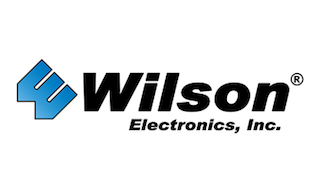Wilson Electronics, Inc.

CELLULAR CONNECTIVITY SOLUTIONS FOR CHALLENGING ENVIRONMENTS
URBAN CASE STUDY - NEW YORK, NY
Like many office buildings in densely populated urban environments, the Manhattan headquarters of NewBay Media subjects employees to cellular signal challenges. Those who work there have long complained of a universal lack of cell phone reception.
So when Wilson Electronics, a manufacturer of cell signal boosting equipment, and CK Technology Group, a New York City-based IT contractor, offered to install a signal booster system, the NewBay Media staff was thrilled at the prospect of having cellular service. Within NewBay, the print and Web brands occupy different floors. Adding to the complexity faced by CK Technology, those two offices are located three floors apart and on different sides of the building. Brad Peskin, CK Technology director of operations, led the initial site survey to determine the precise inside locations where coverage was needed and for which cell carriers.
The next step was to determine the best spot to locate an external antenna. This antenna collects cell signals from outside the building and brings them inside where they then can be distributed to the areas that need coverage. Peskin calls this a “feeder†antenna. Under normal circumstances this feeder antenna would be mounted on the building’s roof. But mounting any equipment on a Manhattan rooftop requires the landlord’s permission, and probably additional permits, insurance and damage waivers as well. Of course securing all these can cause significant delays to a project.
So to avoid that scenario Peskin designed a system for NewBay that included a feeder antenna for each floor mounted inside the building on a window, where the detected cell signal was strongest. However implementation of this novel solution was further complicated by a requirement of radio frequency antennas – the principle of separation distance. If there is insufficient distance between a feeder antenna and a distributor antenna – which distributes cell signals to those areas inside the building that need better coverage, oscillation may occur causing the system to shut down. Oscillation is a feedback loop, like the shrill whistle that occurs when a microphone is placed too close to an audio speaker.
Because he had never attempted this type of solution before, Peskin conferred with Wilson’s technical support staff to confirm that his design would work. He calls the “stellar engineering support enjoyed by installers†a “huge benefit of installing Wilson products.â€
Anthony Verbanac, NewBay Media IT director, monitored the booster system and solicited employee feedback after the installation was complete.
“After the final tuning of the system it appears to be working great,†Verbanac said. “I am able to take calls on my cell phone; they are clear with no drops, and I now get voicemail notifications and SMS text messages. Also, battery life is noticeably longer since the phone isn’t constantly searching for a signal.â€
“Before the system was in place, cell phones were basically useless while in the office.â€
Peskin said he chooses to use Wilson’s boosters over others in the market because of they have “proven to be robust, reliable, and most importantly, relatively easily deployed and affordable.â€
For more case studies and information, please contact us.



